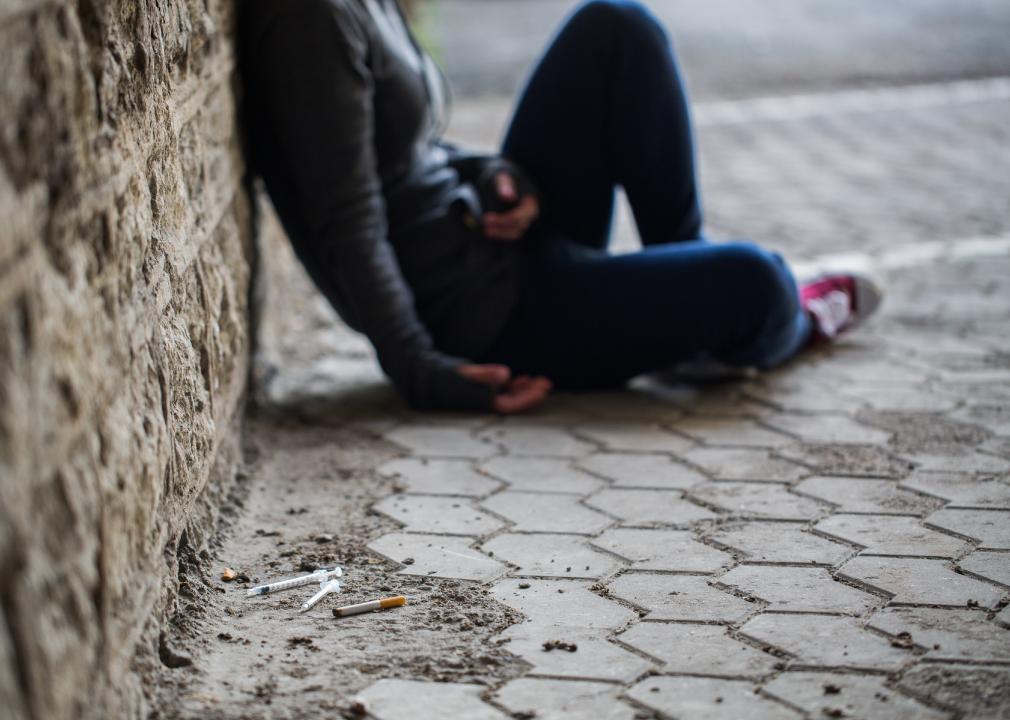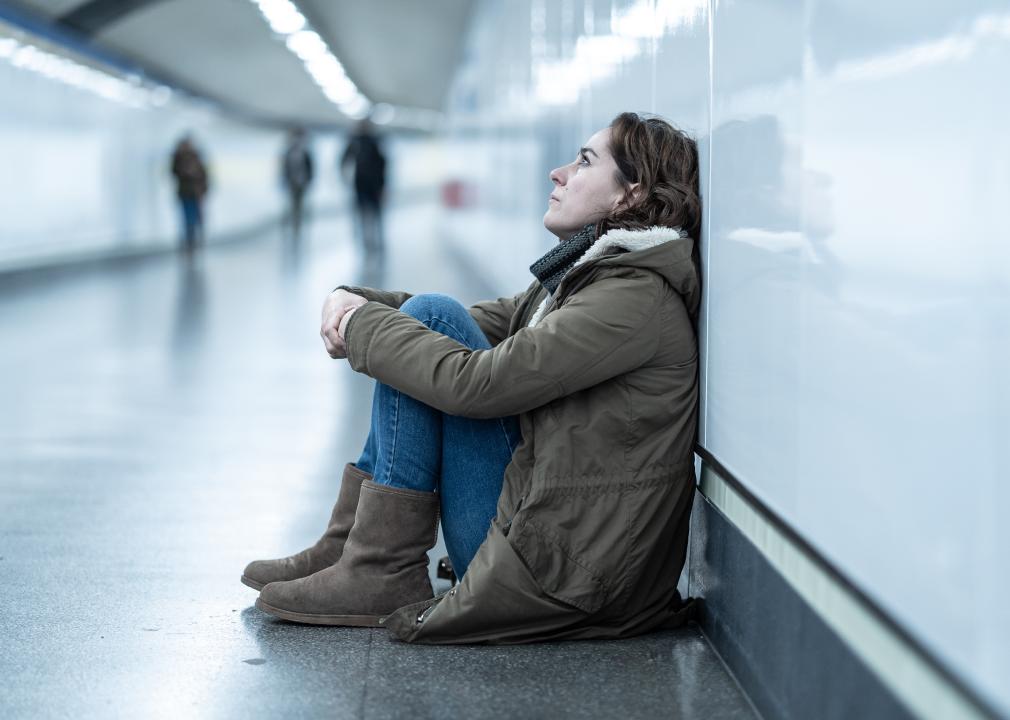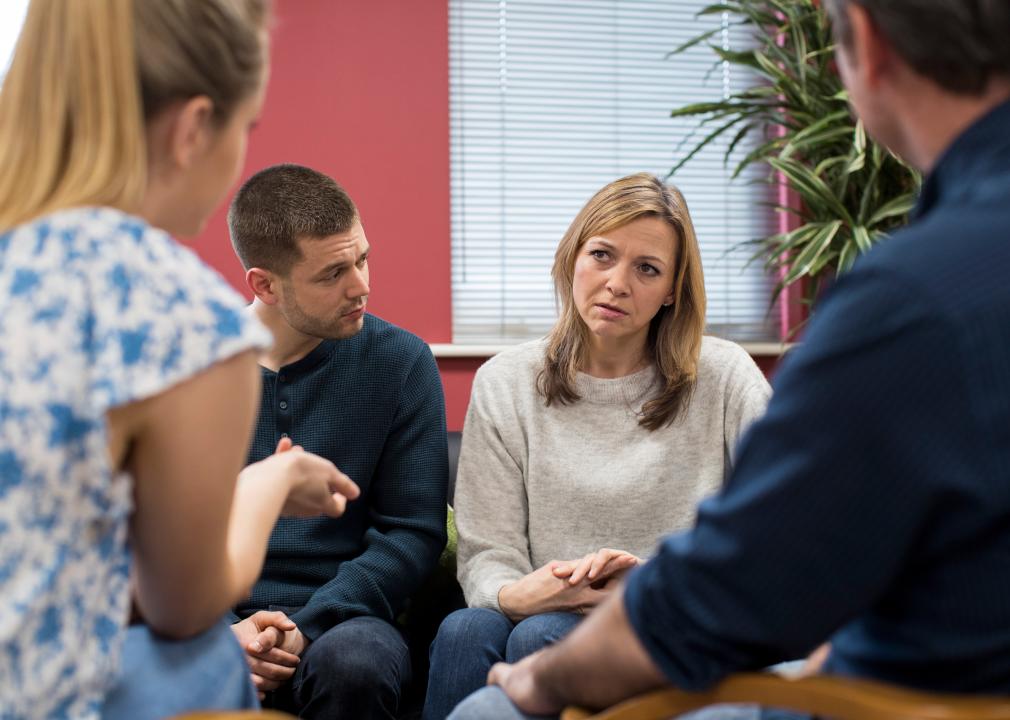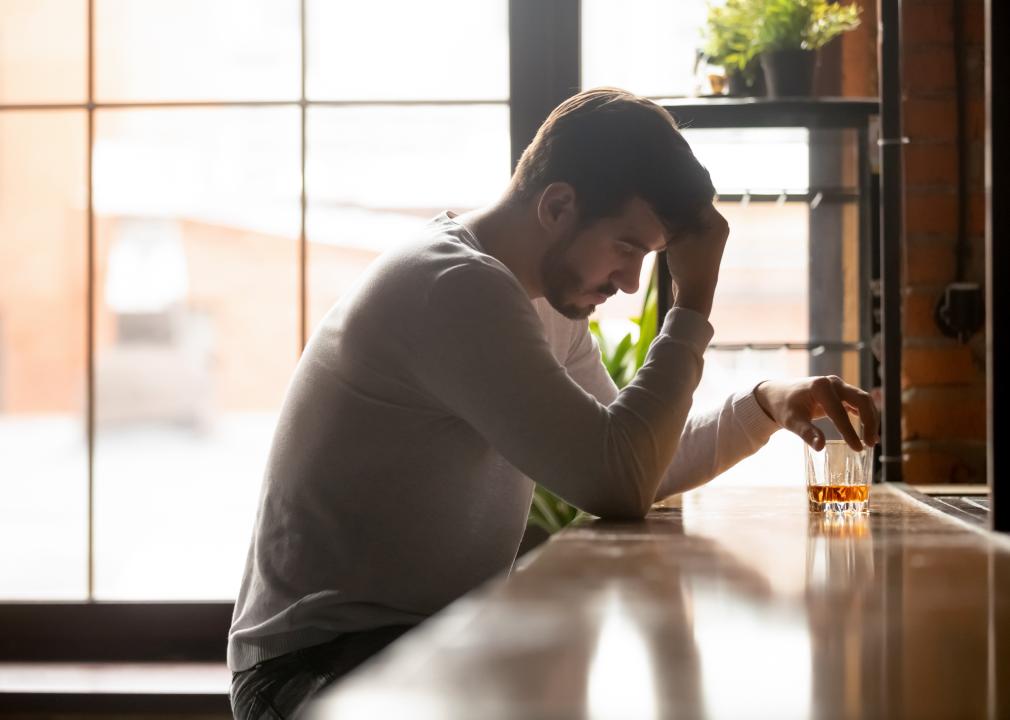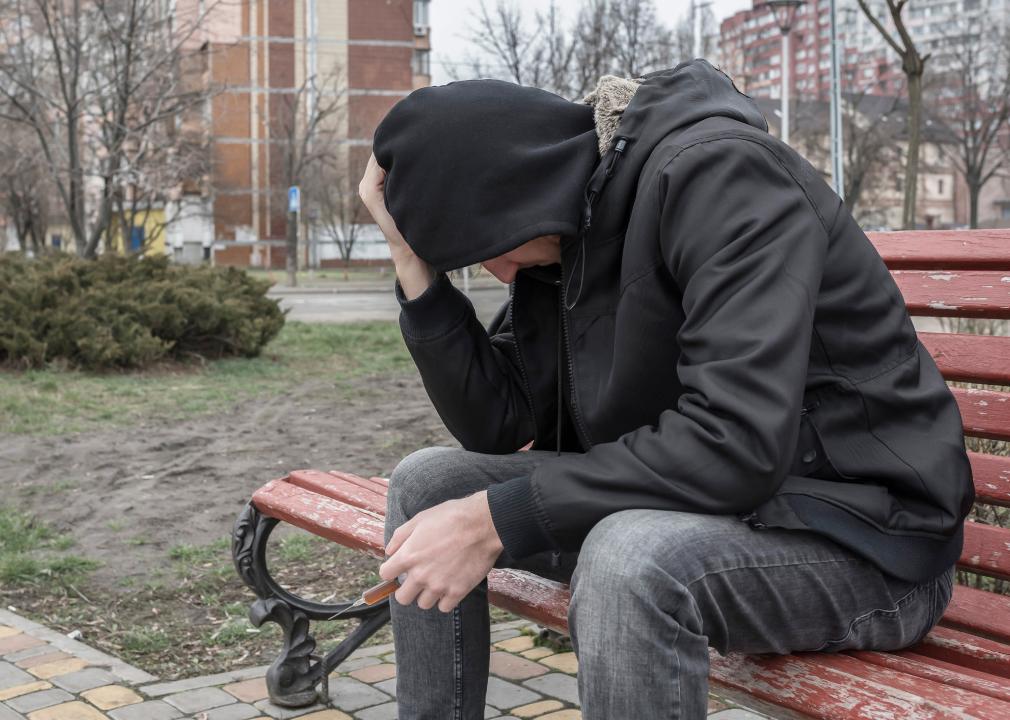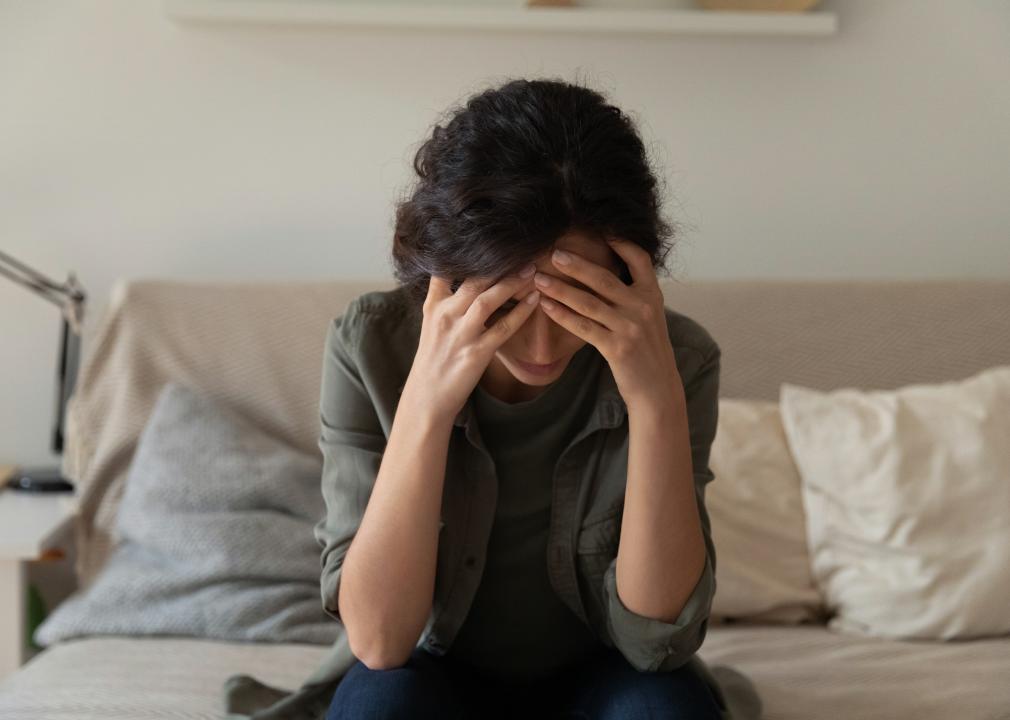10 most common barriers to seeking treatment for substance use disorder
Syda Productions // Shutterstock
10 most common barriers to seeking treatment for substance use disorder
Roughly 40.3 million people in the U.S. had a substance use disorder, or SUD, in 2020. Yet, only 1.4% of those people received any treatment in the past year, and 1% received treatment at a specialty facility. The path to seeking treatment is riddled with obstacles—both systemic and inherent to addiction itself—which can make recovery difficult to access, and in some cases nearly impossible. Stigma surrounding substance use disorder and addiction has been a persistent barrier to seeking both help and understanding about living with the condition.
Substance use disorders are defined by the frequent use of alcohol, drugs, or both that cause “clinically significant impairment,” which includes health problems and the inability to complete responsibilities. Substances covered in the survey’s definition include cigarettes, alcohol, marijuana, hallucinogens, stimulants, inhalants, and opioids, among others. Treatment for substance use disorder varies and can include detoxification, medication, motivational interviewing, counseling (individually or in a group setting), and life skills training.
To investigate the most commonly cited reasons for not seeking treatment for substance use disorder, Zinnia Health reviewed data from the 2020 National Survey on Drug Use and Health, collected by the Substance Abuse and Mental Health Services Administration. The survey results cover people aged 12 and older who were classified as needing treatment for substance use disorder but did not receive any, despite feeling the need for it over the last year.
Released in October 2021, this data was collected in the first and fourth quarters of 2020, spanning 36,284 interviews. With surveys typically conducted in-person, SAMHSA was not able to compile results for the second and third quarters of 2020 due to the COVID-19 pandemic but was able to restart with web-based surveys for the fourth quarter of 2020. These are the most common barriers for people seeking treatment for substance use disorder.
![]()
fizkes // Shutterstock
#9. No openings in a program
– Respondents citing this reason for not receiving substance use treatment: 1.7%
– Standard error: 0.93%
Studies have long shown that the longer the delay of getting a scheduled appointment at a treatment facility, the less likely someone struggling with substance use disorder will attend that appointment. While some people seeking treatment become discouraged and continue using when they’re put on a waitlist, others who stop using during the waiting period view this as evidence that they do not need treatment. Wait times and lack of program openings have become increasingly worse since the start of the COVID-19 pandemic, due to rehab programs needing to space patients out to prevent infection.
Whereas before the pandemic patients might live three to a room, social distancing requirements limited the number of patients who could safely participate in treatment. Making matters worse, the pandemic has exacerbated issues leading to increased substance use and overdoses, such as isolation and emotional and financial stress, causing more people to struggle with SUDs.
SB Arts Media // Shutterstock
#8. Treatment would not help
– Respondents citing this reason for not receiving substance use treatment: 4.3%
– Standard error: 1.96%
SUDs and mental illness often appear together in the same patient, which can further complicate receiving treatment. Depression and other mental illnesses that increase feelings of hopelessness and isolation can make seeking treatment seem futile or impossible. Unfortunately, access to quality, evidence-based SUD treatment in the U.S. can be limited. Stories abound of those seeking treatment cycling in and out of endless programs and rehab centers, often without long-term recovery.
The 12-step model of treatment, inspired by Alcoholics Anonymous and similar support groups, is one of the prevailing programs, despite little evidence that such treatment is effective for those dealing with nonalcoholic addiction. Many may also find it hard to connect to the 12-step’s spiritual, quasi-religious messaging. Additionally, less than half of treatment centers offer programs that include medication-based treatment, which is shown to be highly effective for people struggling with drug use disorders, particularly when used in conjunction with counseling.
fizkes // Shutterstock
#7. Did not have time
– Respondents citing this reason for not receiving substance use treatment: 5.2%
– Standard error: 2.36%
Treatment programs vary dramatically in terms of the type of program (inpatient or outpatient), as well as the length of the program. Some are 30 days, while others are 90 days or even 12 months, in the case of methadone regimen maintenance. While evidence suggests that longer programs seem to yield better results in terms of sustained recovery, these programs—particularly residential ones—are often less financially accessible, and present a barrier in terms of time commitment.
For many people juggling jobs or child and family care responsibilities, going away for an extended period in order to undergo treatment does not seem possible. Often, leaving for treatment is contingent upon having a support system of family or friends willing to take on temporary child care duties, while at other times, courts may become involved in custody decisions. Not all treatment programs are residential, however—outpatient programs are part-time and allow for individuals receiving treatment to hold jobs or return home for part of the day.
fotoNino // Shutterstock
#6. Did not feel a need for treatment at the time
– Respondents citing this reason for not receiving substance use treatment: 5.6%
– Standard error: 1.83%
People suffering from SUDs often do not seek out treatment if they do not perceive themselves as being at “rock bottom,” or if they feel their problem isn’t “bad enough” to warrant treatment. The idea of needing to lose control of one’s life to justify seeking treatment is perpetuated by harmful media portrayals of SUDs. Media stereotypes that depict people experiencing substance use disorders as dangerous, insane, or manipulative, stigmatize addiction and make seeking treatment more difficult. They can also render milder or differently-presenting cases of SUD as invisible or easily dismissed, making it harder for those suffering from the disorder to recognize the need for treatment.
Daisy Daisy // Shutterstock
#5. Did not want others to find out
– Respondents citing this reason for not receiving substance use treatment: 6.5%
– Standard error: 2.59%
Stigma around substance use impedes people from seeking treatment by creating a connotation of “moral weakness” and criminality. While many in the SUD field agree that the condition is a medical disorder and not a choice, there are still many cultural, religious, media, and even medical spaces that still perpetuate harmful notions about addiction as a personal failing. Even the language of “substance abusers” has been shown to perpetuate stigma, as “abusers” are perceived to be “deserving of punishment.”
Additionally, a study from Johns Hopkin University showed 43% of respondents were opposed to giving people with SUDs the same health insurance benefits as the general public. As a result, people suffering from SUDs are often denied medical care, cast out by their families or communities, or discriminated against in the workplace, incentivizing silence and secrecy over seeking help.
fizkes // Shutterstock
#4. Could handle the problem without treatment
– Respondents citing this reason for not receiving substance use treatment: 9.0%
– Standard error: 2.75%
The myth that kicking addiction is a matter of willpower is pervasive amongst people suffering from addiction and nondrug users alike. Similarly, there is a pervasive idea that handling substance use problems individually, without seeking treatment or support, is more honorable or commendable than attaining sobriety with assistance. Both of these myths are embedded in the American ideology that promotes individualism and the “bootstraps” mentality, which touts self-made success above community care or asking for help.
While most people experiencing SUDs believe they can quit on their own—and some do—research has shown that addiction changes the brain in a way that makes “deciding to quit” highly difficult, and staying sober long-term even harder. That’s why some combination of counseling, medication, and formulating a long-term recovery plan is helpful and often necessary to the recovery process.
fizkes // Shutterstock
#3. Might cause neighbors/community to have negative opinion
– Respondents citing this reason for not receiving substance use treatment: 11.9%
– Standard error: 3.46%
It’s no surprise that witnessing the public ridicule of celebrities struggling with drug use disorders—such as Charlie Sheen, Amanda Bynes, and Mary-Kate Olsen—has increased feelings of fear and shame in those experiencing addiction. Research shows that shame can hinder the ability to recover from addiction since addiction sometimes begins as a coping mechanism for already-existent feelings of shame.
Fear of community members or coworkers forming a negative opinion is not an irrational one: Ostracization has been shown to impact the part of the brain that registers physical pain and can be long-lasting. There are, however, federal protections under the Family and Medical Leave Act, as well as the Americans with Disabilities Act, which prevent people seeking treatment for SUDs from being fired or retaliated against.
Photographee.eu // Shutterstock
#2. Did not find a program that offered the type of treatment wanted
– Respondents citing this reason for not receiving substance use treatment: 14.4%
– Standard error: 3.82%
Limited treatment options for SUDs is a particularly pressing issue in rural areas, often due to lack of resources, a problem which is exacerbated by limited transportation and often poor geographical access. The lack of treatment options in rural areas has only become more pronounced over the past several years, as the opioid epidemic, coupled with the COVID-19 pandemic, has continued to disproportionately impact rural communities. With the many approaches to SUD treatment available, one thing is widely agreed upon: Different types of treatment work for different people, and there is no single path to recovery. That’s why having a variety of treatment options is more than a matter of preference—it can be the difference between life and death.
shablovskyistock // Shutterstock
#1. No health care coverage and could not afford cost
– Respondents citing this reason for not receiving substance use treatment: 19.1%
– Standard error: 4.60%
The staggeringly high cost of addiction treatment services is by far the largest barrier to seeking treatment for people struggling with SUDs. Over the past several years, investigative coverage on the for-profit rehab industry has illuminated one ubiquitous story: families and individuals facing financial ruin after seeking SUD treatment, or simply not seeking it out at all due to its prohibitively high cost. This is an issue that blocks low-income people from receiving treatment, resulting in an overdose death rate that is more than twice as high as that of affluent people.
Even middle-class people with health insurance are not fully protected, as many residential facilities charge between tens and hundreds of thousands of dollars for treatment, a number which would plunge the average American household into crippling debt. While financial assistance for treatment services is available, as are state-funded programs, access to information on these resources is limited, particularly for those without computer access.
fizkes // Shutterstock
Other reasons
Other reasons cited that had low precision around the results:
– Had health care coverage but did not cover treatment or did not cover full cost
– No transportation/programs too far away/hours inconvenient
– Not ready to stop using
– Did not know where to go for treatment
– Might have negative effect on job
– Some other reason
Other barriers to seeking treatment for SUD include not being ready to stop using, a factor that often comes into play when the legal system becomes involved in substance-related cases. Court-ordered treatment, while sometimes helpful, has not been shown to lead to long-term recovery for people entering into treatment on an involuntary basis. In one report, opioid-related overdose deaths were more than twice as high for those who were forced into treatment than those who chose to go.
Additionally, many court-mandated treatment programs are not “medically-sound,” and “struggle to meet … human rights standards,” according to a report from Physicians for Human Rights. Research has shown that individuals who voluntarily enter into treatment for SUDs have more motivation to change behavior than those who were admitted involuntarily, though this is not necessarily an indicator of the recovery outcome.
This story originally appeared on Zinnia Health
and was produced and distributed in partnership with Stacker Studio.
